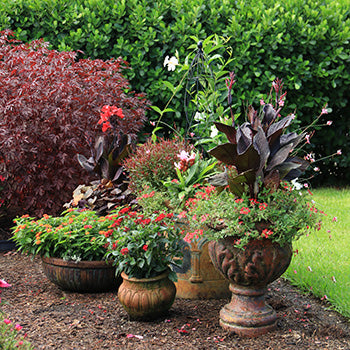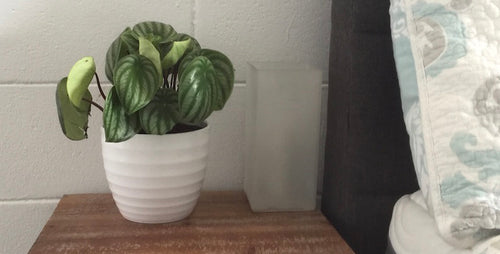
You don’t have to be Sherlock Holmes to figure out why your favorite houseplant suddenly develops yellow leaves, but you do need to do a little sleuthing to solve the mystery. That’s because yellow leaves are a symptom of different situations. Here are seven common reasons why your houseplant may develop yellow foliage.
1. Water
Overwatering or under watering are two common causes of yellow leaves. If your plant is under watered, it will eventually sacrifice some of its foliage in a desperate effort to conserve moisture. Too much water, on the other hand, will often kill your plant’s roots because they can’t breathe in waterlogged soil. This will also cause your plant to produce yellow leaves.
To avoid either of these problems, start by making sure your plant is in a pot that has drainage holes in the bottom. These holes will allow excess water to drain away between watering. Then, only water your plants when the top inch of soil feels dry to the touch. Frequency may vary from pot to pot, depending on their size (larger pots with more soil generally need less frequent watering), season (most plants don’t use a lot of moisture during the dark days of winter) and plant type (succulents, for example, don’t require as much water as heavy drinkers such as peace lily).
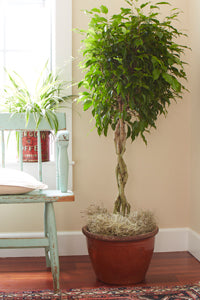
2. Light
Houseplants can also develop yellow leaves if they are getting too much or too little light. The leaves of shade lovers such as tropical ferns, nerve plant, and calathea, for example, will slowly fade to yellow if they are forced to live in a sunny spot.
On the other hand, sun-worshipping houseplants such as succulents, croton, and jade plant may start to yellow if they are grown in dim conditions. Always read the plant label when you buy a new houseplant and place it in an appropriate spot where its light requirements are met. Bright, indirect light will generally keep most types of houseplants happy.
3. Transport
If your houseplant starts to drop yellow leaves right after you bring it home from the garden center, it may not be a cause for worry. Most likely your plant is just adjusting to the lower light levels in your home and is shedding leaves it can no longer support. Some species such as ficus, for example, will sometimes drop yellow leaves when they are moved to a new location. But don’t panic, in most cases your plant will produce a new crop of foliage after a short period of adjustment.
Note: We recommend waiting to repot houseplants at least a week or two after you bring them home so they can adjust to their new environment before undergoing transplant stress.
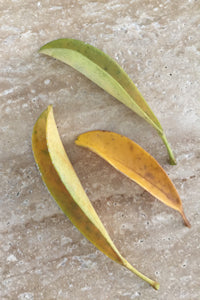
4. Maturity
As plants get older their lower leaves will often turn yellow and fall off. This doesn’t mean your plant is ill. It just means that those lower leaves are now being shaded by higher foliage and are no longer needed by the plant. Also, remember that many common houseplants are actually trees in their natural habitats and that dropping leaves is just part of the process of them trying to form a trunk as they get taller. Norfolk Island pines, for example, have a tendency to sacrifice their lower boughs as the trees grow taller and taller.
5. Hunger
Houseplants will also develop yellow or splotchy leaves if they are missing out on some key nutrients in the soil. This is generally not a problem when you first buy a plant because they are grown and sold in nutrient-rich potting mix (and most of our plants come with a time-release fertilizer added). But, after a while, your plants will use up the food they came with and need an occasional boost of plant food to maintain healthy leaves. To keep your plants in top form, offer them a little dilute liquid fertilizer every time you water.
6. Pests
Indoor plant pests such as aphids and spider mites can also be the cause of yellow leaves on your houseplants. Both suck plant juices causing leaves to look anemic and faded. Aphids resemble small grains of rice attached to the end of the stems. Spider mites are almost impossible to see with the naked eye, but they create fine-hair like webs on the undersides of your plants’ leaves. Both pests can be controlled with an organic houseplant insecticide. These pests also thrive in dry air so keep the humidity level high around your plants.
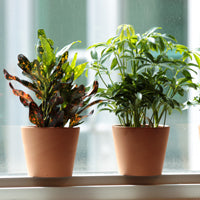
7. Temperature
Houseplants are tropical in nature and don’t enjoy weather extremes. If they are forced to live too close to a heat vent, fireplace, air conditioner or drafty window or door, your plants may show how unhappy they are by dropping yellow leaves. Most houseplants thrive in temperatures between 65 and 80 degrees F.














